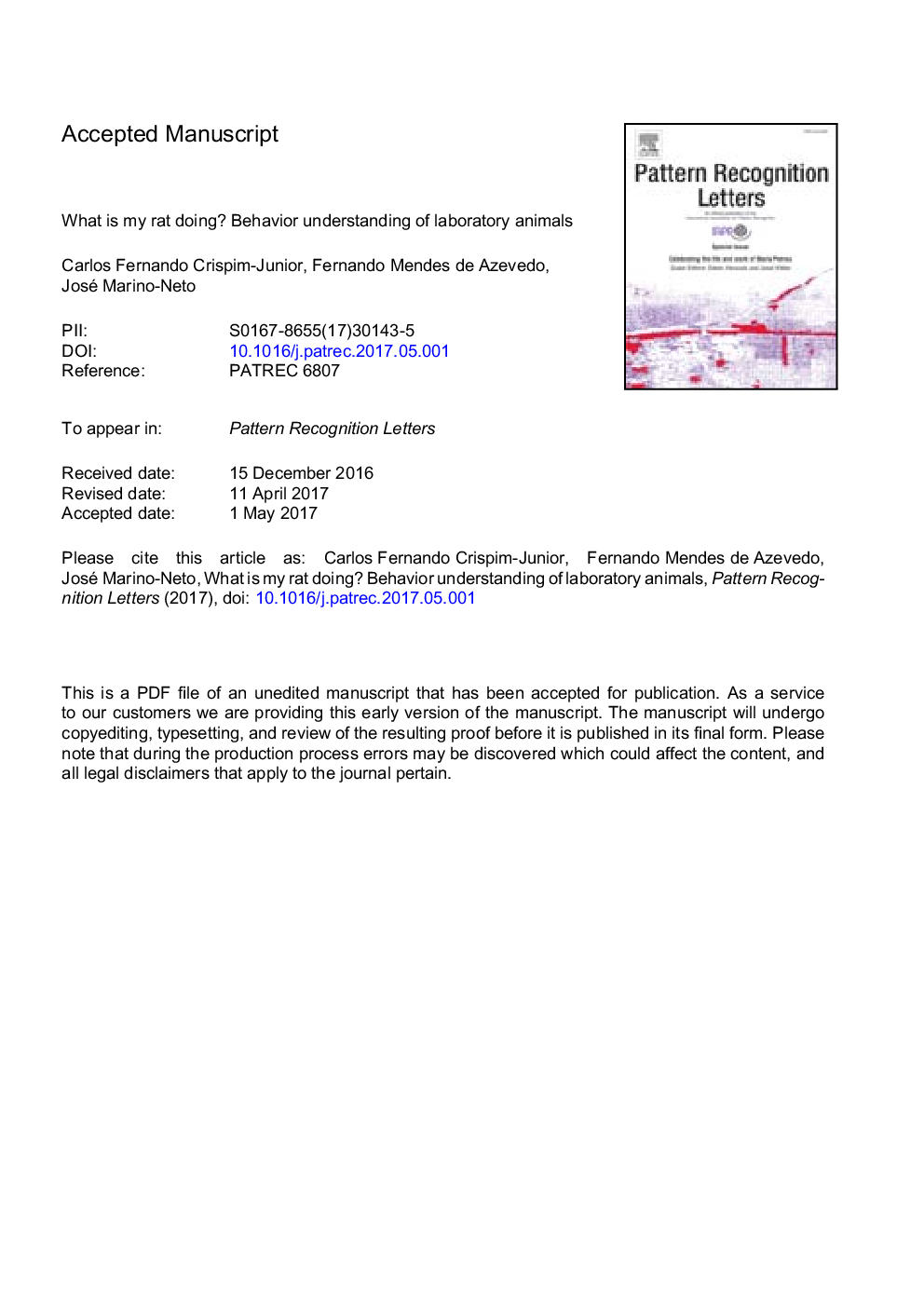| Article ID | Journal | Published Year | Pages | File Type |
|---|---|---|---|---|
| 4970068 | Pattern Recognition Letters | 2017 | 12 Pages |
Abstract
Animal behavior recording plays a significant role in biology and medicine research. To automate this task current methods attain to only a few features of behavior signal (e.g. animal morphology) causing biased countings for some classes of behaviors. This paper details a framework for the automatic classification of behaviors in laboratory rats based on a hybrid set of visual features (morphological and kinematic) which distribution over time is modeled using descriptive-statistic features (DSF; central tendency and variance indexes). Behavioral classification is performed by Multilayer perceptron (MLP) networks using as input DSFs statistically selected per behavior class. Data for MLP learning and evaluation were derived from video recordings of rats (n = 6, adult Wistar females) individually placed in an open-field arena for 10 min after injection with caffeine (2 or 6 mg/kg) or vehicle (control). Experimental data demonstrate that statistically-guided selection of DSFs significantly improves the behavioral classification performance through the use of behavior-specific attributes with the secondary advantage of reducing ambiguity and redundancy in the input feature set. Finally, the proposed framework can also discriminate between drug-induced and control video samples in the modal, dynamic aspects of behavior.
Keywords
Related Topics
Physical Sciences and Engineering
Computer Science
Computer Vision and Pattern Recognition
Authors
Carlos Fernando Crispim-Junior, Fernando Mendes de Azevedo, José Marino-Neto,
